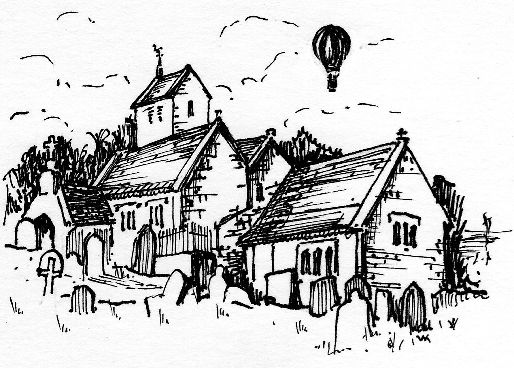PENALLT
A Village Miscellany
© The Parochial Church Council of Penallt
“Life itself is a partnership not only between those who are living but between those who are dead, and those who are to be born. We are irrevocably bound to the past – and no less irrevocably, though the picture is less clear to us, to the future.” Iris Orego

FOREWORD (to 1989 edition)
By the Rev. J. K. C. Denerley, M. A. (Oxon), Vicar of Penallt and Trellech and Chaplain of Ty Mawr Convent
It gives me great pleasure to comment this amazingly varied and fascinating collection of local history. It has ever been the glory of the human race to take note of the past, whether we think of our Celtic ancestors telling stories by the evening fire, or the village schoolmaster in Babington’s day teaching of Romans, Normans, Plantagenets or Tudors. Our Christian faith itself is rooted in history, as is the Judaism from which it came.
In such a local work as this, which sprang from an idea at a tea party in New Mills, and has grown and grown as the thought caught on and spread to more and more contributors, there are bound to be a few inaccuracies and omissions; but may I simply ask that these might stimulate further articles, which can be published from time to time in the Parish Newsletter.
INTRODUCTION
Local guide books make only brief mention of the parish of Penallt and give virtually no hint of the richness and variety of the village’s social history. This book aims therefore to present a full background study of the village and a picture of life in the parish through the years and particularly since Victorian times.
Penallt stands on the high ground south of Monmouth in Gwent, above the west bank of the River Wye. The name can be translated from the Welsh as ‘head or top of the (wooded) hill’ and, looking up from the river, the aptness of the name can still be readily appreciated; but the high plateau land to the south is now largely agricultural. In old maps, the name is spelt with only one ‘l’, a practice continued by many parishioners today. However, since the county of Monmouthshire was incorporated into Wales in 1976, officialdom tends to use the Welsh spelling with two ‘l’s.
But there have been far greater changes than this. Gone from the parish are the little stone quarries, the charcoal-burning and lime-burning, the Wye barges hauled by men, the ferry carrying villagers to work in the Redbrook Tinplate factory, even the railway after only 88 years of existence. Change has continued with increasing speed and it became clear that a special effort was needed to record the ‘living memories’ still with us. Some of them have appeared in the Parish Newsletters, but much that is new has been gathered and is incorporated here.
This book, started by Mary Whitmore’s research, has been compiled by Dorothy Lloyd, Lyn Harper, V. F. Kimber and Chris Cooper; thanks are also due to Lyn for having spent many hours producing the typescript for the printer.
A considerable debt is owed to the authors of earlier Church and parish booklets – Rev. J. du Heaume, Maj. Y. R. H. Probert and Mr. Ian Hope-Simpson.
The illustrations are by Helen Scourse, V. F. Kimber and Walter Keeler; some are based on photographs, those of the Argoed and Moorcroft House being taken with kind permission of the owners. The drawing of the village school is the design used for the commemorative mugs and plates when the school closed; it was drawn by Sarah Allpress. The maps are schematic in form and are not strictly to scale.
Thanks to the generosity of Tim Cadbury, who with his wife Sara lived very happily at Church Hill Farm from 1978 to 1988, the printing costs have been covered and all proceeds from the sales will go to Penallt Church.
Finally, and most importantly of all, the compilers wish to thank all those people whose memories, comments and descriptions, both spoken and written, have contributed a great deal of the material in the book. They hope that it will be seen, not as an intrusion into privacy but as a record by which we shall remember and value our village – Penallt.
POSTSCRIPT:
This reprint of the volume first published in 1989 incorporates some minor corrections and additions, but does not attempt to bring the text up to date. However, if demand for this reprint indicates sufficient continuing interest in the story of Penallt, we would hope to see produced a second volume comprising both revised and new material.
April, 1997